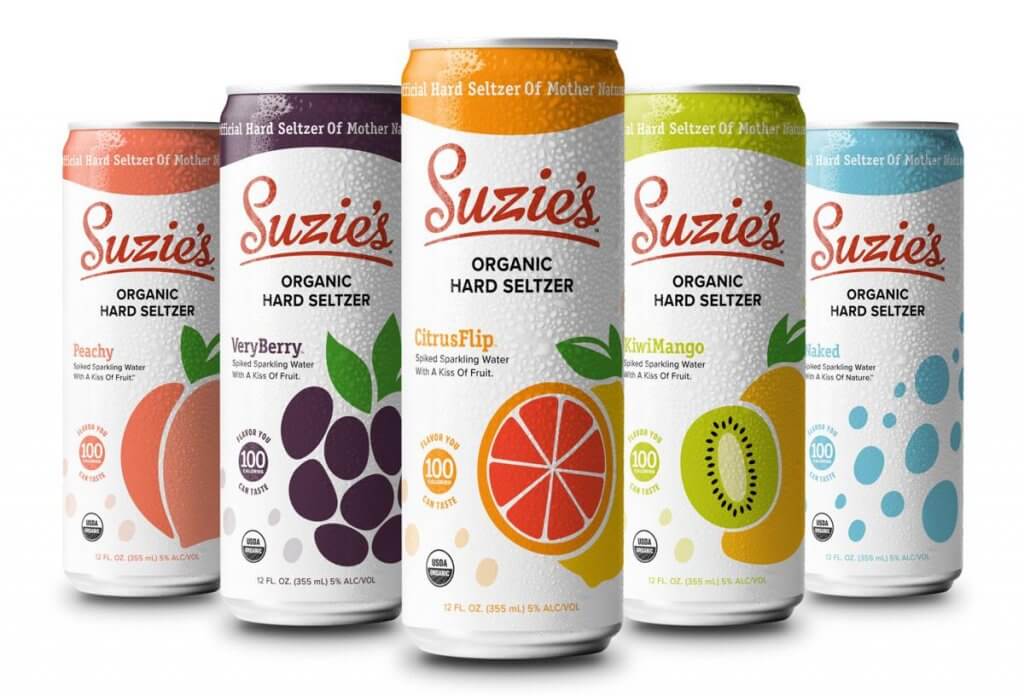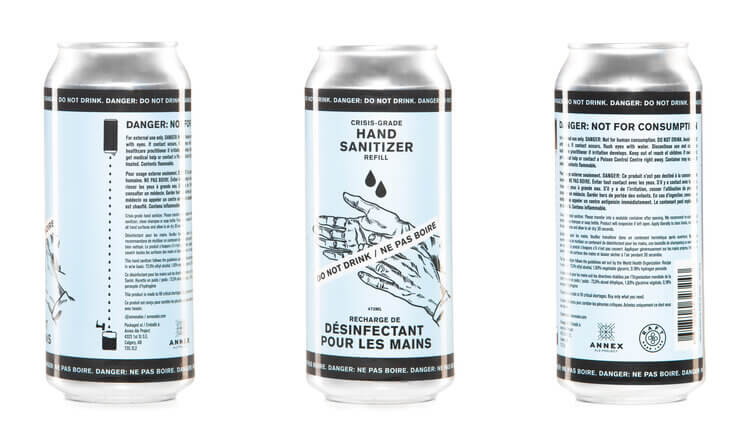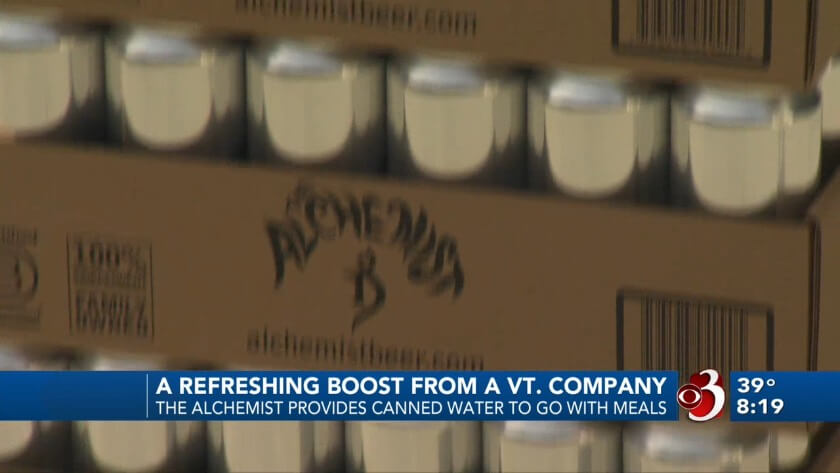1/3 of Craft Breweries are already making non-beer products. Keeping up with to-go sales and adding new product types to the line-up has been a lifeline for many Cask customers. The ability to package quickly has never been more crucial and it’s here for the long-haul.
Cask systems are specifically built to handle higher volumes of CO2 without risking high product waste, and the food grade stainless steel fill heads mean stronger sanitizing/CIP won’t leave any flavors behind. This guide is for packaging higher/non-carbonated and flavored beverages and offers stories from Cask customers that are canning up new stuff on everything from entry level to fully automated systems.
Hard Seltzer
Hard Seltzer added $344m in off-premise retail sales during Covid from April 2020 to 2021, pushing the segment over $4 billion; Of those Sales, 60% of growth is from new SKUs. Hard Seltzers are forecasting sustained growth of 60% through 2021, and high double-digit growth over the next five years.
Barhyte Specialty Foods in Pendleton, Oregon spun-off a health-conscious beverage company, Suzie’s Brewery Co to release a new line of craft hard seltzers. They’ll launch this summer and focus on the local, outdoor-friendly market in light of the usual swarm of OR coast summer tourism.
Briess Malt & Ingredients Co. put together a comprehensive hard seltzer program for newcomers including recipes, bundled ingredients and FAQs.

Guide for Canning Flavored and Highly Carbonated Beverages
Flavoring Effects on Equipment | Cask food grade stainless steel fill heads will allow you to package any craft beverage product without the risk of flavor contamination – whereas any porous material such as plastic has the potential to absorb flavor. Make sure you are packaging flavored beverages with non-absorbent fillers to protect your other core products.
Higher Carbonation | Briess recommends carbonating hard seltzers to 2.8-3.0 vol CO2. While most atmospheric fillers cannot support carb levels above 2.6 vol CO2, Cask systems prioritize CO2 & Temperature management with tight tubing diameter restrictions and dual valves to decrease cycle times so you can package higher carbonated without the product waste. Cask customer Annex Ale Project packages craft soda confidently at 3.2 vol CO2.
 Hand Sanitizer Refills
Hand Sanitizer Refills
Annex Ale Project rolled out canned hand sanitizer refills to stock local grocery chains that were experiencing shortages. In addition to craft beer & sodas, their sanitizer refills can be found at 32 retail locations.
Cask is happy to support customers producing sanitizer with a free kit including change-over supplies (beer lines, foam shuttles and o-rings) to swap out on your canning line once you’re ready to get back to canning your craft beverage products.* If you’d like to schedule phone time with one of our Installation and Service Technicians to discuss packaging considerations we’d be happy to chat with you.

“On March 16th we closed our tap room for in-house consumption due to COVID-19. Our beer and soda revenue dropped by 60% and we were faced with the possibility that the brewery could shut down. After hearing stories from front-line workers how they were running out of hand sanitizer we consulted with Raft Beer Labs to craft the recipe for Crisis-Grade Hand Sanitizer. Our goal is to keep the brewery operational while making a small and humble contribution to the fight against COVID-19.” – Annex Ale Project
Guide for Canning Hand Sanitizer
Parts Protection | Cask doesn’t anticipate any damages resulting from hand-sanitizer ingredients, however, you may want to consider replacing your beer lines, foam shuttles and o-rings when changing back over to your craft beverage product – provided by Cask. We recommend cooling your hand sanitizer product even by a few degrees to prolong the life of the beer coils.
CIP Process & Cleaning Your Canning Line | Cask systems stainless still feel heads allow for caustic to run directly through the line. Caustic is intended to reduce and/or eliminate organic growth, it wouldn’t hurt to run through a few CIP processes when changing over from hand sanitizer to your craft beverage product. We cannot speak to what impact the hand-sanitizer would have on flavor of your next craft beverage product run through the canning line, nor do we know what impact this could have on the aesthetics of plastic and metal components of the canning line.
Aluminum Can Considerations | Typically, aluminum cans only withstand 20% ABV (or 40 proof). These standards are set based on the assumption that product in cans is safe for human consumption and won’t sit shelves for longer than a 12-month period. In these unprecedented times, this short-term product won’t be consumed by humans and sold as a ‘refill’ option likely to be moved from an aluminum can into container for immediate use. Important to note that cans filled with hand-sanitizer will not have the same structural integrity that they typically would have when filled with craft beverage products due to lack of carbonated pressure within the can. Keep this in mind when stacking pallets for storage purposes and when issuing communications and label warnings.Cask encourages printing a warning that aluminum can integrity and shelf-life very limited.
Electrical & Flammability Exposures | In terms of components that are in contact with the liquid we can’t think of any way that a spark from the machine could ignite the liquid. However, there is a 24 V potential on the fill probes. There is potential to generate a spark if the cans were to come into contact with a probe, but the likelihood is very low. If there are explosive fumes in the atmosphere from the alcohol evaporating then it’s a very different matter. There definitely will be sparks generated inside the control panel during operations as relays and the E-Stop contactors are opened. Outside of the controls there are no components that would generate a spark. Please note, Cask canning lines are not rated for an explosion-proof environment.
Water
Heady Topper geniuses at The Alchemist have been canning up gently carbonated water to be in service of frontline workers during the pandemic. The Alchemist team purifies the water and lightly carbonates as a cost-effective alternative to nitrogenating still water.
Guide for Lightly/Non-Carbonated Beverages
Lightly Carbonated | Carbonating is a low to no cost option to provide necessary internal can pressure without nitrogenating if you do not have access to a liquid nitrogen (LN2) doser. Cask recommends 10 PSI at refrigerated temperatures with at least 2.0-2.2 vol CO2 required. Water will give up CO2 more readily during the canning process because there are no proteins or solids to hang onto – whereas beer will typically lose 0.1-0.3 vol CO2, you can expect water to lose 0.3+.
Non-Carbonated | Non-carbonated beverages require LN2 dosing. Beverage cans need a certain amount of internal can pressure (10-15 PSI minimum at refrigerated temperatures) in order to have sufficient rigidity and durability to be stacked/handled/shipped. Cask systems are specifically engineered to minimize LN2 burn-off by dosing consistently across each individual fill head, minimizing dose-to-seam time with an easy transition forward-mount lid slide and can indexing carousel – so you can be confident about the consistency of every can.
___________________________________
Let us know if we can be of help packaging any new products on your existing canning system, or if you’re trying to get canning quickly.
Cask’s Virtual Training Portal and Installation Technicians will make sure all new customers are up and running quickly despite any duration of travel bans.
*Canning hand sanitizer refill products comes with no guarantees or warranties as Cask has not performed any hand sanitizer testing. These considerations for packaging and distribution are to offer support to our customers who are exploring ways to support their communities.


